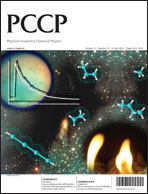Rydberg gas theory of a glow discharge plasma: II. Electrode kinetics (probe theory) and the thermal rate constant for Symmetrical charge transfer involving Rydberg atoms of Ar
Abstract
A steady state chemical kinetic model is developed to describe the conduction of electrical current between two probes, of relatively large surface area, immersed in a fast flowing plasma by the mechanism of charge transfer through a gas of Rydberg atoms. It correctly predicts the shape of current–voltage profiles which are similar to those of Langmuir, or floating double probe measurements. The difference is that the plateau current at the probe reflects the transport limited ion current at the cathodic electrode, even when the probe is being scanned in the anodic region. The sharp gradient leading up to the plateau of the I–V curve is associated with the field dependence of the efficiency of Rydberg atom ionisation, not the ‘electron temperature’. This approach gives a good qualitative explanation of experimental behaviour over a wide range of probe bias voltages and includes the occurrence of electron impact ionisation at the anode. It also gives a value for the thermal rate coefficient of symmetrical charge transfer between Rydberg atoms of Ar (8.2 × 10−7 molecule−1 cm3 s−1, at 313 K; plasma density ≈ 1010 atoms cm−3, total pressure = 2.7 mbar).


 Please wait while we load your content...
Please wait while we load your content...